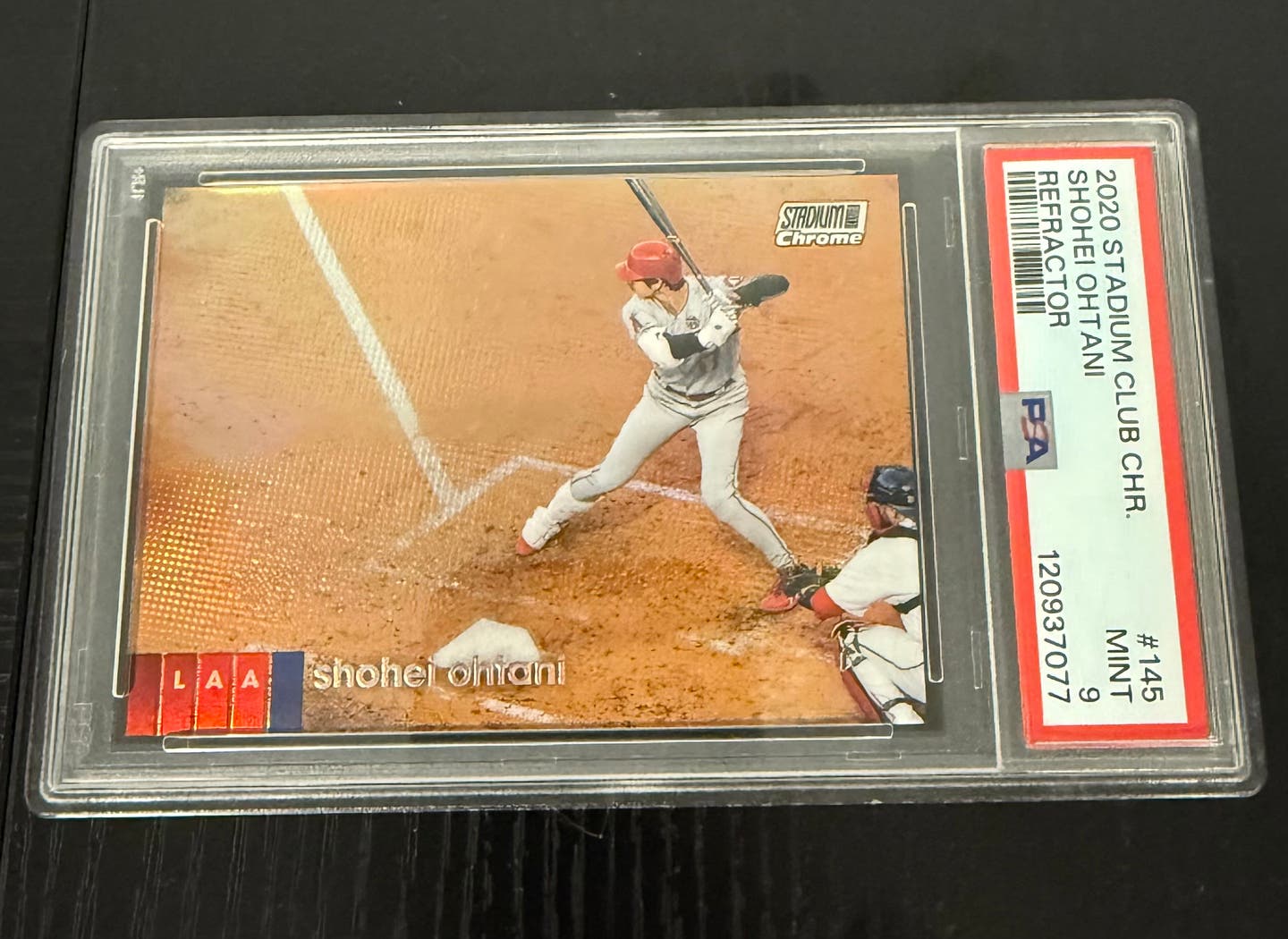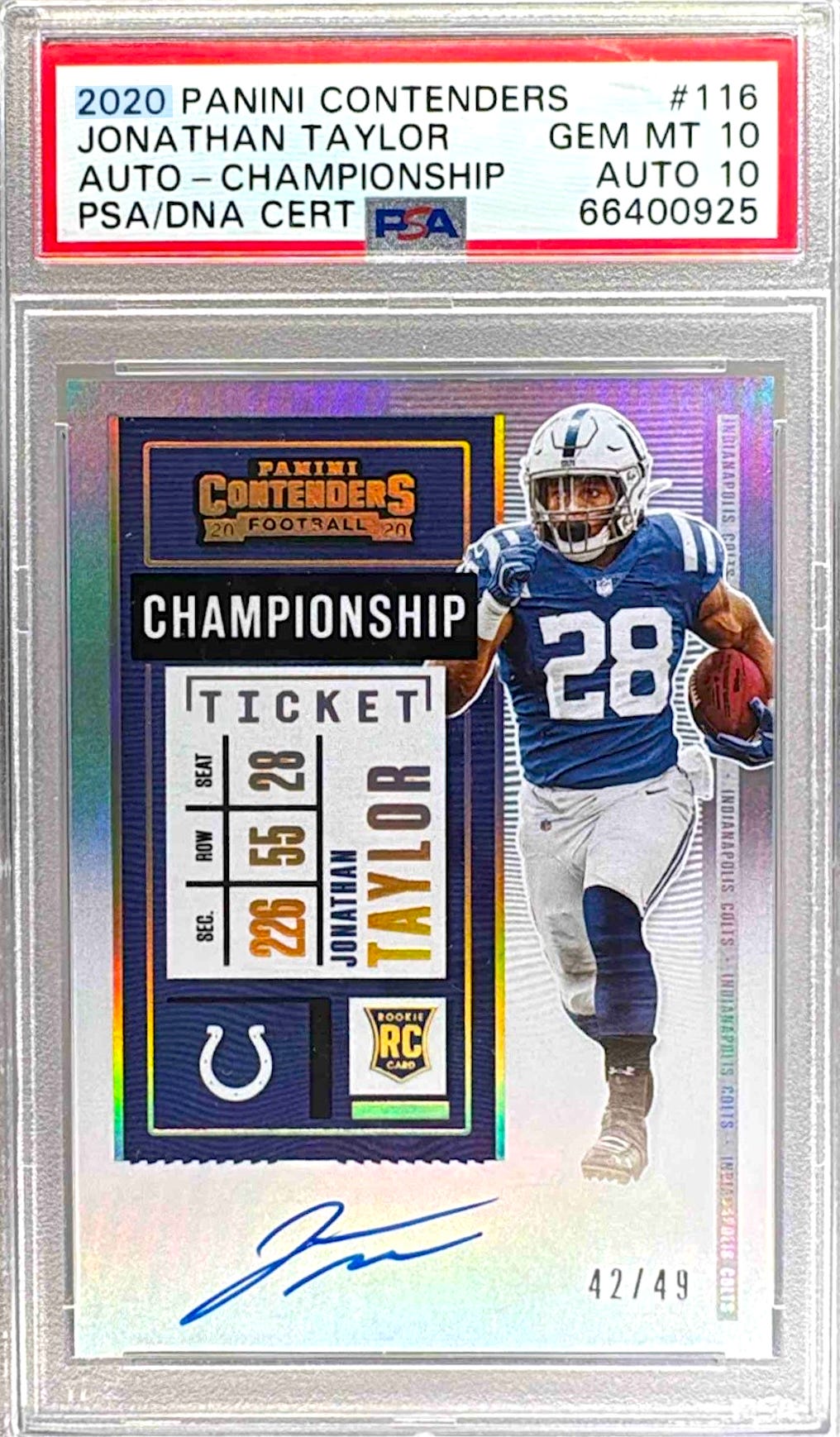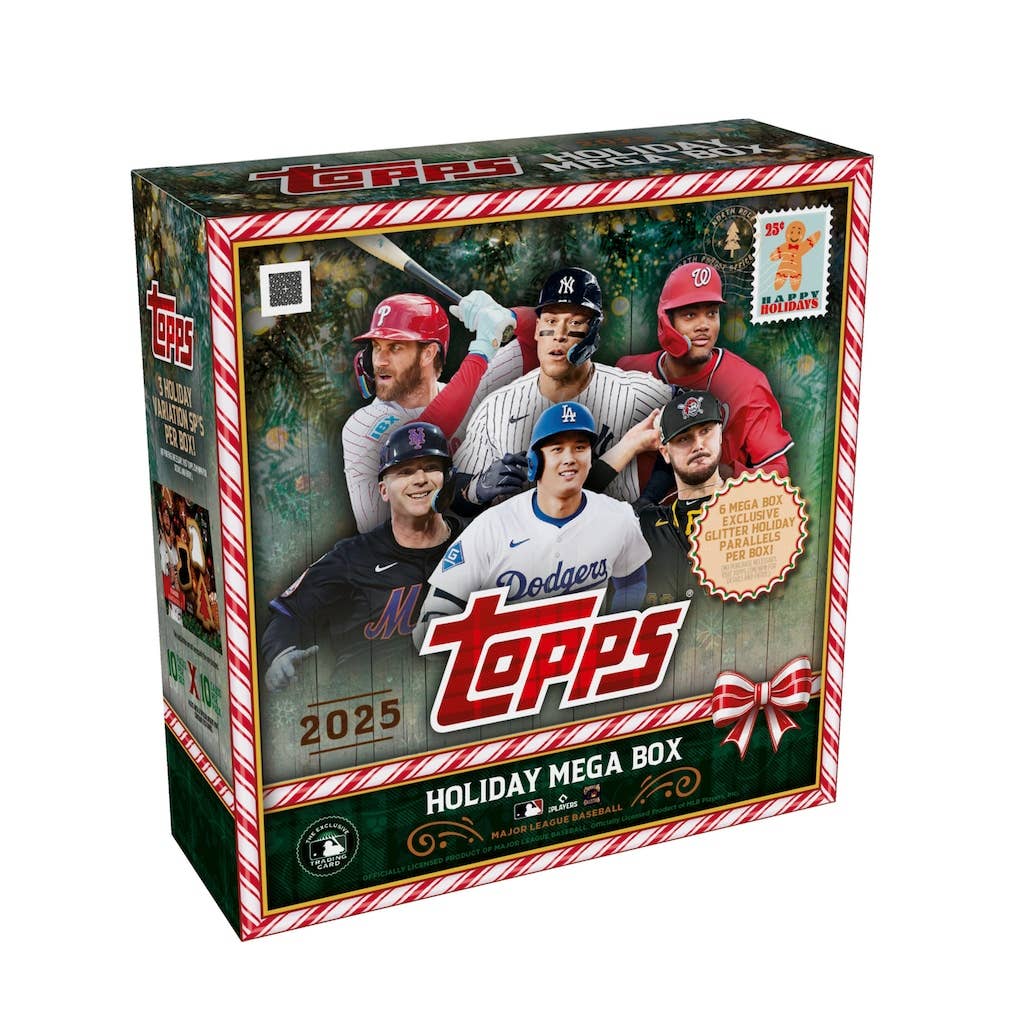News
A closer look at the 1951 Topps Magic Football set
Every card collector knows that Topps has been issuing sports cards seemingly forever. Each year like clockwork, they look for new Topps baseball cards in the late winter and new football cards in late summer. What they do not know is that once upon a time Topps was unsure of itself and taking small tentative steps in both areas.
In 1951, probably trying to determine exactly what America's card buyers were interested in, Topps printed no less than five sets of baseball cards, none of them resembling those issued annually now. There were two sets (called "Red Backs" and "Blue Backs") intended to be used in a table baseball game, two more 11-card sets (one for current players and one for all-time greats) die-cut so they could be folded out and stood up, and a final set of oversize team cards but encompassing only nine of the 16 existing franchises. None of the sets was particularly popular, although Topps definitely hit its stride the following year with the classic 1952 set.
It faced similar questions at the end of baseball season. Topps' competitor Bowman enjoyed an exclusive contract with the National Football League, as it did with Major League Baseball. For whatever reason, possibly its lack of success with its five baseball sets or the cost of doing legal battle over less-popular (and hence less-profitable) football cards, Topps was not willing to compete with Bowman in the professional football arena but still desired to issue something in the world of sports. As professional basketball and hockey were niche sports in 1951 just as professional lacrosse is today, Topps' solution was its first set of football cards that would be recognizable as such to modern collectors. This was the so-called "Magic" set containing 75 cards of current college players.
Topps had experimented twice previously with products featuring college gridiron stars. The previous year they had issued a set of tiny and unattractive cardboard cards of college players that contained not much more than player pictures, names, positions and schools. The back of each card displayed only a pennant of the player's college. The 1950 set was, by all accounts, a failure and is no more popular today.
Topps' other attempt at football cards prior to 1951 was the 1948 "Magic Photo" set. These were 252 postage stamp-size pictures of a variety of subjects. There were, to be sure, 13 "All American Football" and five "Football Thrills" photos included. Among the other 234 subjects were baseball and basketball players, boxers, wrestlers, movie stars, lawmen and outlaws of the Old West, and an entire series of "American Dogs." Interestingly, while the football players in the set were recent, the baseball stars were retired all-time greats such as Babe Ruth and Ty Cobb. The modern equivalent would be opening a pack of cards today and finding Yogi Berra, Tom Brady, John Cena, Sandra Bullock, the Hillside Strangler, and a poodle. As might be expected, the 1948 Magic Photos enjoyed little popularity then or now except for the handful of baseball Hall of Famers.
The marketing staff at Topps must have learned its lesson, for the 1951 Magic set is recognizable today as containing true "football cards." It would also be Topps’ last attempt at football cards for four years until the landmark 1955 All American set, which consisted of college players both current and past. In early 1956, Topps bought out Bowman and that autumn began its annual run of professional football sets, which continues to this day.
The 1951 set measures only 2 1/16 by 2 15/16 inches, less than current cards but far superior to Topps' undersized issues of 1948 and 1950. They were sold in a penny pack containing one card and a stick of gum or a nickel pack holding, with the gum, three two-card panels requiring separation. Strangely, most cards are found today with even and well-centered borders. They are not like other cards cut from packages by collectors, such as Post, Jello, and Bazooka, which are infamous for their jagged sides and varying sizes. Either the single card packs were sold in much greater numbers than the two-card panels or 68 years of handling has worn down any mis-cut edges caused by the unpredictable scissor work of inexperienced young hands in 1951.
Each card's front contained the player's picture, posed and, in about 60 percent of cases, without his helmet. Even helmeted players are in full view, as there is not one facemask to be found in the entire set. The only other adornment on the card front is a small box which contains the player's name and position with his school's nickname. For example, card #68 is "Joe Johnson, Halfback (Eagles)." The pictures are black and white photos which have been colorized, sometimes with an extremely heavy hand. This led to some interesting results. For example, Bert Rechichar (#30) is either wearing women's makeup or is glowing red from the cold. In those days of black and white photography and television, Topps' artists seemingly had no idea what many school uniforms looked like. This caused some color schemes that bore no resemblance to their actual uniforms. Glenn Smith (#44) is shown in florescent orange jersey and pants. Another amusing example is Bob Reynolds of Nebraska (#53). Topps would reuse his same picture in its classic 1955 set but change the color of his pants from bright yellow to a more natural khaki.
Card backs are skimpy but provide a preview of what the reverse of future issues would look like. The only statistics are age, height and weight. Most of the players in the set would today be considered undersized, even by high school standards. Charles Hanson (#43) is a "break-away ball carrier" even though only 165 pounds. Incredibly, North Carolina State tackle Elmer Costa (#60), at 6-foot and 220 pounds, is described as "mammoth" and "the biggest man on the team."
There is also a brief write-up. Probably unfamiliar with the players in an era of little media coverage beyond the local area, Topps resorted to most of the cliches familiar to sportswriters of the time and their readers. Jimmy Monahan (#1) is a "glue-fingered pass receiver." Johnny Turco (#15) is a "speedy broken-field runner." And Gale Galloway (#56) is a "bone-jarring tackler." It may come as a surprise to anyone under the age of 60, but many players at the time "went both ways," playing both offense and defense. Bill Owens (#31) "plays end on the defense and holds down the fullback spot on the offense" while Nick Liotta (#61) "holds down a guard position on both offense and defense."
Beneath the write-up is a question asking to identify the player's school from the nickname, such as "What team is known as the Diplomats?" There is also a small box purportedly showing the school's mascot but using generic symbols rather than the actual mascots displayed by the schools at athletic events. For example, the "Fighting Irish" of Notre Dame are represented by a shamrock and not the boxing leprechaun so familiar to the school's fans. In addition, Topps often used the same mascot for different schools with the same nickname. For example, the "Wildcats" of Kentucky, Northwestern, and Arizona are all represented by the same feline, one most resembling a house cat.
The majority of the back is taken up with a blank area to be scratched off to find the answer, thus the supposed element of "Magic." Topps later used similar scratch-off quizzes on its three football sets between 1958 and 1960. The majority of cards from those later years do not have their backs scratched off. By contrast, for some reason the number of 1951 cards with unscratched backs is greatly outnumbered by those scratched.
Nowhere on the card is there actually found the term "Magic." The word appears only on the wrapper, where buyers are encouraged to "Save Em Trade Em" and "Scratch It Match It." Nevertheless, the set has always been known as "1951 Topps Magic Football."
The 75 college players who appear in the set seem to have been selected somewhat arbitrarily, without regard to any preseason honors. There is an element of geographical diversity. No school appears more than once in the set. Each region of the country is well represented except for the West Coast. For whatever reason, players from only three western colleges appear. They are Ed Rotticci (#35) of Santa Clara, Zack Jordan (#44) of Colorado, and Lawrence Hairston (#74) of Nevada. Thus, Topps missed out on Frank Gifford (USC), Les Richter (California), Hugh McElhenny (Washington), and Ollie Matson and Gino Marchetti (both of San Francisco). All of these players were taken in the first 14 picks of the 1952 NFL Draft and are in the NFL Hall of Fame today.
Also, apparently in further pursuit of diversity, Topps selected many players from minor conferences and schools which have never been considered national football powers. A few of these are Ed Weber (#6) of William and Mary, Walt Trillhaase (#26) of Lehigh, and Vinnie Drake (#46) of Fordham.
There are several notable players in the set. Bill Wade (#2), Babe Parilli (#4), Tom Scott (#7), and Marion Campbell (#19) all enjoyed long professional playing careers. Several others enjoyed shorter NFL careers, such as Dewey McConnell (#21), who played in nine games for the Steelers in 1954. George Young (#48) held a variety of executive positions in the NFL. Johnny Bright (#72) was a first-round pick of the NFL Eagles but opted to star in Canada, where he is known as "the Jim Brown of Canada." Vic Janowicz (#10), as his card notes, won the Heisman Trophy the previous year and went on to briefly play both professional football and baseball. Topps somehow missed out on the 1951 Heisman winner, Dick Kazmaier of Princeton, although it did include players from four other Ivy League schools (Brown, Columbia, Dartmouth, and Cornell).
The 1951 Magic set has never been popular with autograph collectors, probably because of the cards' small size and the anonymous nature of many of its players. Autographed cards are seldom seen anywhere. Collecting a complete autographed set is virtually impossible. This is because Steve "Cadillac" Wadiak (#36), a "snake-hipped" running back from the University of South Carolina, was killed in an automobile accident in early 1952, shortly after being drafted by the NFL's Pittsburgh Steelers.
There is also a 2009 Topps Magic set, which is not a reprint of the 1951 set but which does adopt its format in the usual 2½-inch by 3½-inch size and contains current players and their autographs.
Although not printed in large numbers, the set is neither difficult to find nor expensive to collect, even the half dozen stars (Wade, Parilli, etc.). Commons can be found in EX condition in the $15-$20 price range and in VG condition for half of that. Expect to pay 50 percent more for any card with an unscratched back. Near mint samples can cost upwards of $100, especially those with unscratched backs. But a football collector who is willing to live with rounded corners, scratched backs, and an occasional crease may just appreciate his 1951 cards, and may even find a bit of magic in them.








